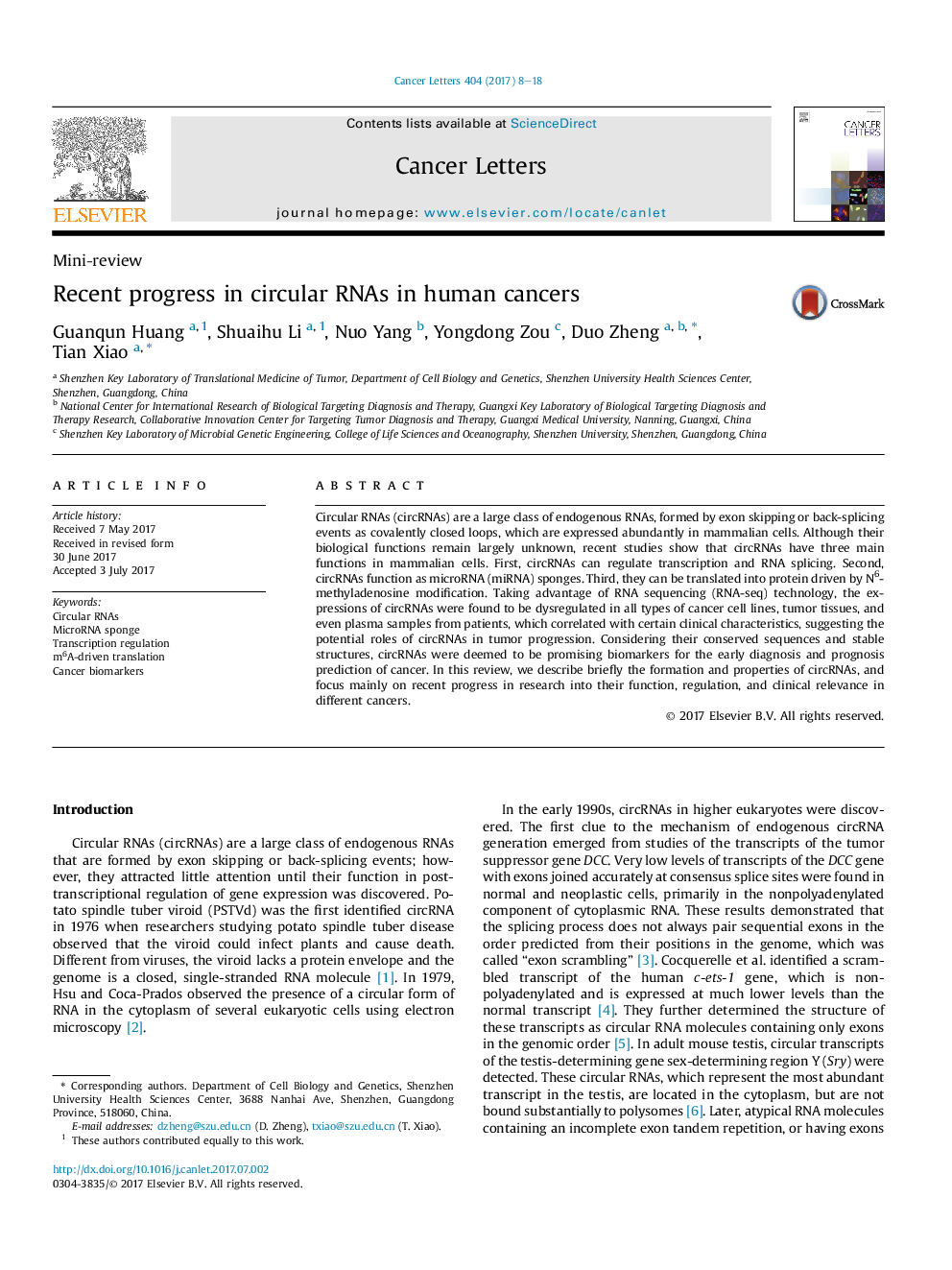| Article ID | Journal | Published Year | Pages | File Type |
|---|---|---|---|---|
| 5525176 | Cancer Letters | 2017 | 11 Pages |
â¢CircRNAs are no longer regarded as “non-coding” RNA, since they can be translated to protein driven by m6A modification.â¢For most circRNAs rarely contain miRNA target sites, miRNA sponge might be not the predominant mode of circRNA function.â¢CircRNAs were found to be dysregulated in cancer cell lines, tumor tissues, and even plasma samples from patients.â¢CircRNAs were deemed to be promising biomarkers for the early diagnosis and prognosis prediction of cancer.
Circular RNAs (circRNAs) are a large class of endogenous RNAs, formed by exon skipping or back-splicing events as covalently closed loops, which are expressed abundantly in mammalian cells. Although their biological functions remain largely unknown, recent studies show that circRNAs have three main functions in mammalian cells. First, circRNAs can regulate transcription and RNA splicing. Second, circRNAs function as microRNA (miRNA) sponges. Third, they can be translated into protein driven by N6-methyladenosine modification. Taking advantage of RNA sequencing (RNA-seq) technology, the expressions of circRNAs were found to be dysregulated in all types of cancer cell lines, tumor tissues, and even plasma samples from patients, which correlated with certain clinical characteristics, suggesting the potential roles of circRNAs in tumor progression. Considering their conserved sequences and stable structures, circRNAs were deemed to be promising biomarkers for the early diagnosis and prognosis prediction of cancer. In this review, we describe briefly the formation and properties of circRNAs, and focus mainly on recent progress in research into their function, regulation, and clinical relevance in different cancers.
